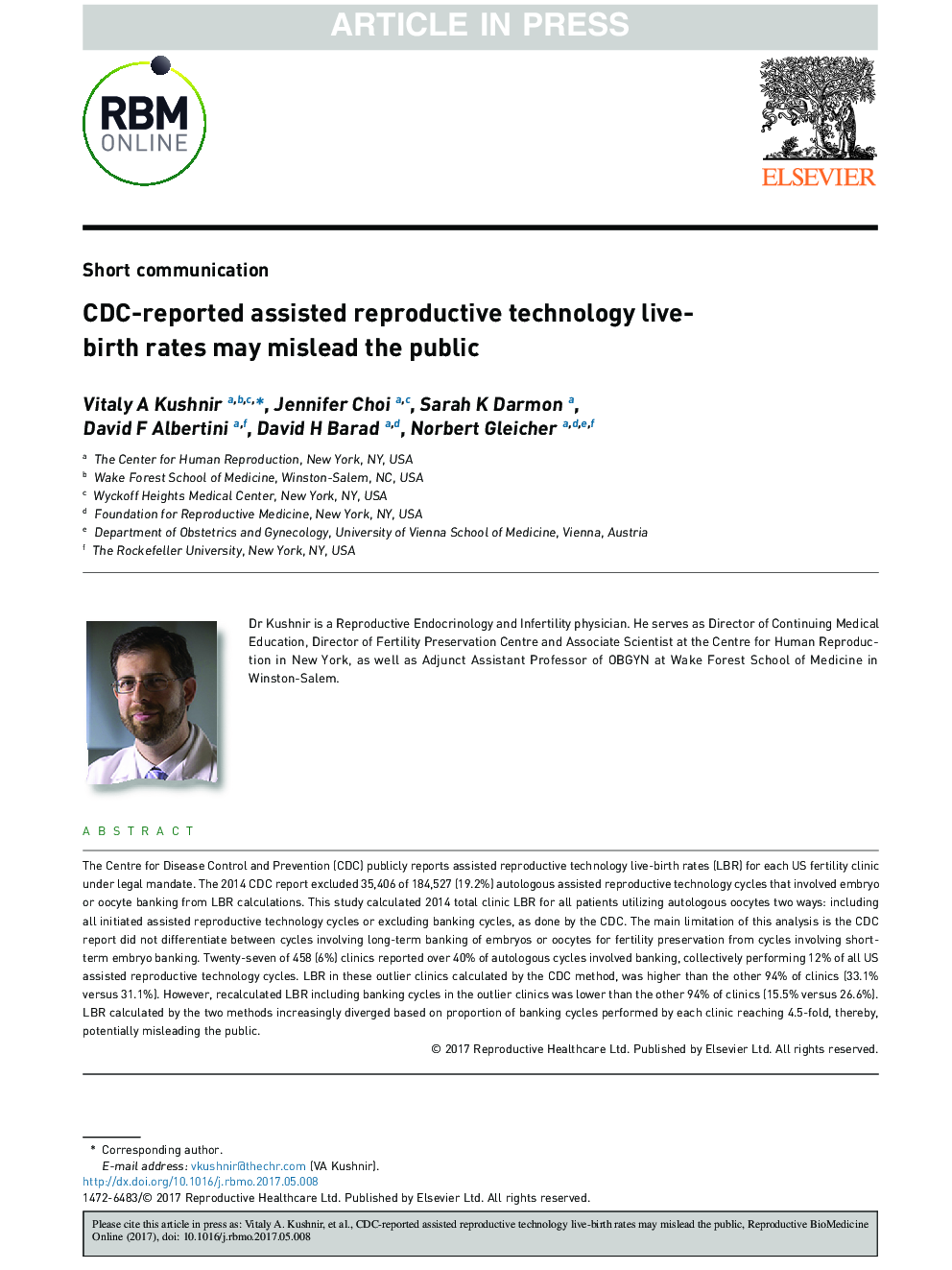| Article ID | Journal | Published Year | Pages | File Type |
|---|---|---|---|---|
| 5696686 | Reproductive BioMedicine Online | 2017 | 4 Pages |
Abstract
The Centre for Disease Control and Prevention (CDC) publicly reports assisted reproductive technology live-birth rates (LBR) for each US fertility clinic under legal mandate. The 2014 CDC report excluded 35,406 of 184,527 (19.2%) autologous assisted reproductive technology cycles that involved embryo or oocyte banking from LBR calculations. This study calculated 2014 total clinic LBR for all patients utilizing autologous oocytes two ways: including all initiated assisted reproductive technology cycles or excluding banking cycles, as done by the CDC. The main limitation of this analysis is the CDC report did not differentiate between cycles involving long-term banking of embryos or oocytes for fertility preservation from cycles involving short-term embryo banking. Twenty-seven of 458 (6%) clinics reported over 40% of autologous cycles involved banking, collectively performing 12% of all US assisted reproductive technology cycles. LBR in these outlier clinics calculated by the CDC method, was higher than the other 94% of clinics (33.1% versus 31.1%). However, recalculated LBR including banking cycles in the outlier clinics was lower than the other 94% of clinics (15.5% versus 26.6%). LBR calculated by the two methods increasingly diverged based on proportion of banking cycles performed by each clinic reaching 4.5-fold, thereby, potentially misleading the public.
Related Topics
Health Sciences
Medicine and Dentistry
Obstetrics, Gynecology and Women's Health
Authors
Vitaly A. Kushnir, Jennifer Choi, Sarah K. Darmon, David F. Albertini, David H. Barad, Norbert Gleicher,
